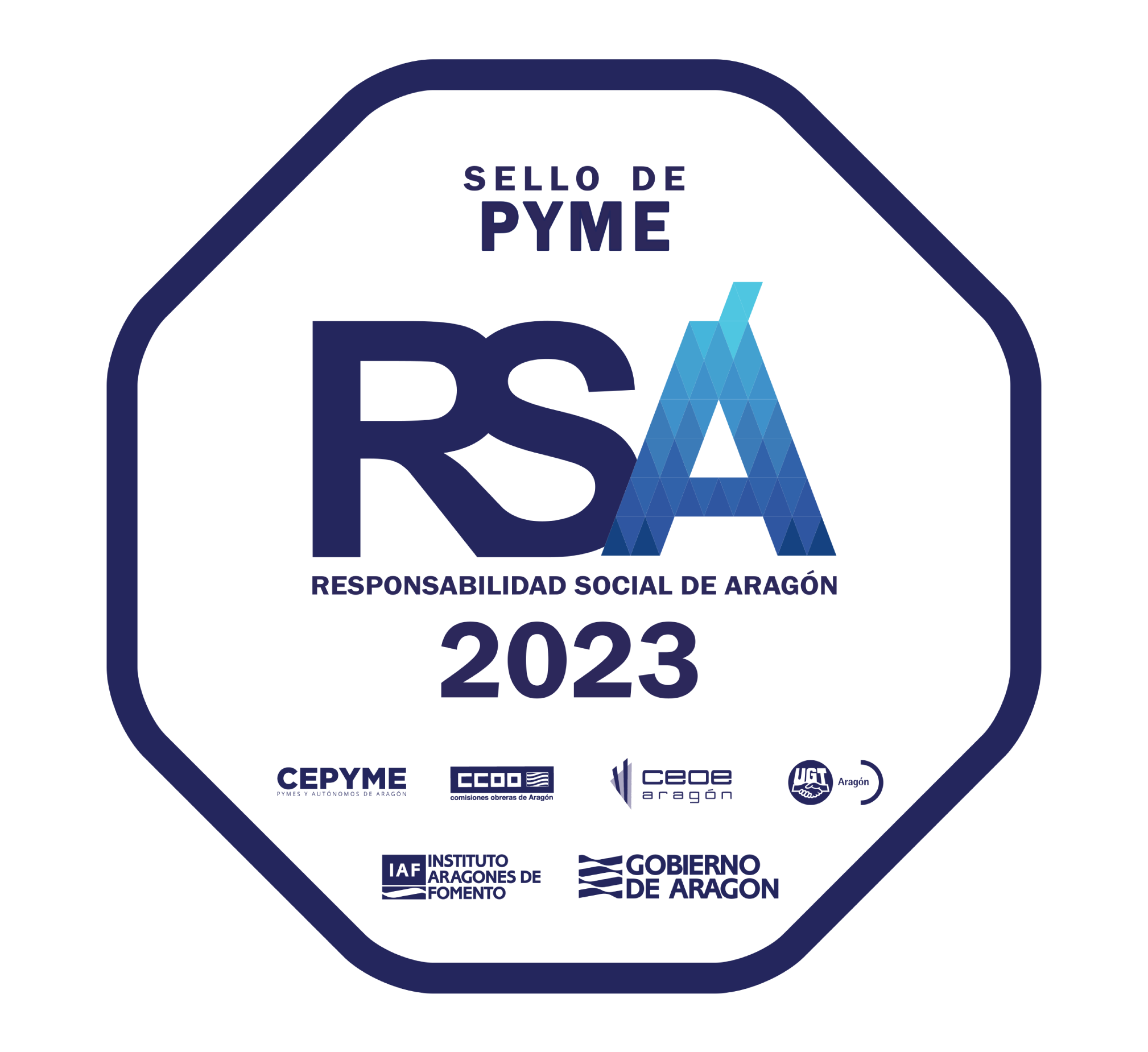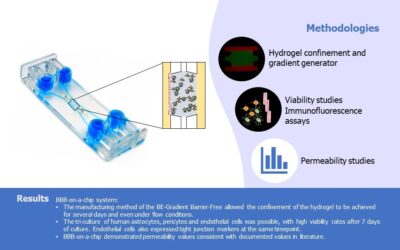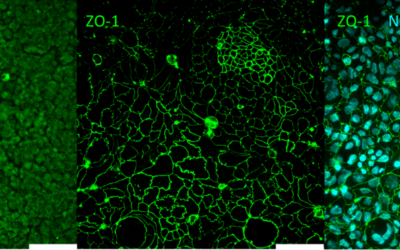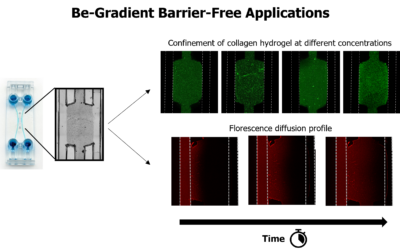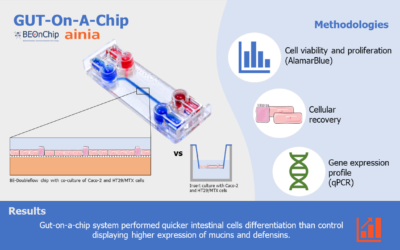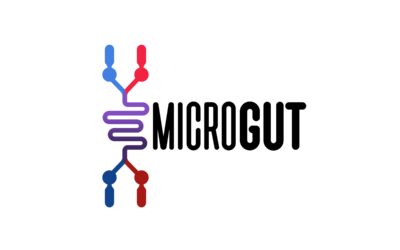News & Blog
BE-Gradient as a blood-brain barrier model
Here we provide a comprehensive and brief overview of a scientific publication detailing the developmental journey of the BE-Gradient Barrier-Free device. In it we elucidate its intricate design process and rigorous testing procedures in a collaborative effort between BEOnChip and the University of Zaragoza1. . Furthermore, researchers at IBEC highlighted the pivotal role of this device as a blood-brain barrier model, underscoring its efficacy and potential in the field.
Cell fixation, staining and immunostaining in a chip.
Cell fixation and immunostaining are critical techniques in cell biology and biomedical research.
Here, we provide the step-by-step procedure for fixing and labelling intestinal cells (HT29MTX and Caco2) cultured on the upper fluidic channel of the BE-DoubleFlow device (Figure 1). The structures labelled were mucin 2 and zonula occludens.
Organoids on chip
Over the past decade, the application of organoids in scientific research has surged remarkably, primarily due to their unparalleled ability to mimic intricate cell-cell interactions across multiple dimensions. Organoids also excel in accurately mirroring protein and gene expression patterns from patient samples, making them invaluable in biomedical research.
The fusion of organoid culture with microfluidic technology holds immense promise in revolutionizing their laboratory utilization. This synergy not only simplifies the creation and maintenance of organoids but also paves the way for innovative enhancements. By integrating microfluidics, we can introduce sensors into organoid systems, enriching their functionality. Furthermore, this combination opens avenues to address certain limitations of organoids, such as incorporating a functioning vascular network or enabling co-culture with immune system cells.
In this exploration, we delve into the exciting potential of marrying organoid and microfluidic technologies. By harnessing their combined strengths, we stand on the cusp of a new era in laboratory research, poised to unlock deeper insights into complex biological systems. Join us as we explore the frontier of organoid and microfluidics integration, a promising domain where science meets innovation.
BE-Transflow device as an epithelium-on-a-chip model for permeability studies
Replicating the permeability of a tissue barrier is pivotal in evaluating the selective transport of substances, such as chemicals, drugs or cosmetics, through epithelial tissues. The capacity of substances to cross tissue barriers influences their absorption into the bloodstream and effectiveness. Hence, determining the permeability of a substance in the pharmaceutical or cosmetic industry is paramount, especially in toxicological studies. Here, we review a scientific publication of the TME Lab, in which the team lead by Jesus Ciriza uses the BE-Transflow as a novel platform for permeability studies.
BE-Gradient Barrier-Free applications: Hydrogel confinement and diffusion profile
Our innovative BE-Gradient Barrier-Free design is tailored for 3D cultures, featuring a central chamber connected to two side fluidic channels without any physical barriers. This cutting-edge design eliminates potential leakage points in physical barriers, making this chip perfect for creating vascular networks. In this context, we investigate the application of hydrogels with varying concentrations in the device.
BE-Doubleflow App. notes: Gut-on-chip 2
To better mimic the intestine, Gut-on-Chip (GOC) should present adequate intestinal barrier function. Absorption studies are a way to assess the entrance and permeation of substances (such as nutrients or drugs). Within adsorption studies, digestion blanks must be used as control samples to be compared with the digested ingredients or food of interest. The digesta contains digestive enzymes and bile salts at concentrations that although physiologically relevant are harmful to cells. For this reason, there are different strategies to detoxificate this digesta, among which is dilution with culture medium. However, extensive dilution of the sample will difficult the posterior analysis.
This guide compares the BE-Doubleflow (BDF) device as GOC dynamic system with static culture for the set-up parameters for absorption studies using a digestion blank.
Project: MITI2
MITI2: Gut Microbiota-Induced Tregs for Inflammatory-Bowel-Disease (IBD) Immunotherapy Last 5th of July, we took part in the kick-off meeting in Nantes of a R&D project lead by INSERM in which Beonchip will be participating in the next 4 years.MITI2 focuses on the regulatory properties of a subset of microbiota-specific TR1-like regulatory T (Treg) cells, for which an unprecedented association with the clinical outcome of patients in various inflammatory diseases has already been shown, for therapeutic use in inflammatory bowel diseases (IBD).Existing treatments are complex, with most people requiring lifelong medications, dietary and lifestyle modifications, and some requiring...
Cell recovery protocol
One of the strongest advantages of BEOnChip devices is their compatibility with microscopy which allows the monitoring of the cell culture overtime or at designated time points. However, there are several cell features that are important to evaluate, such as their genetic and/or protein expression profile. Techniques such as PCR and Western blot are not based on image acquisition but in the cell recovery and lysis. Our devices are compatible with cellular recovery and in this technical note will go step-by-step to demonstrate how to perform it.
BE-Doubleflow App. notes: Gut-on-chip 1
This guide starts to explore the advantages that BE-Doubleflow offer for the creation of a Gut on chip platform. Here, we compares the BE-Doubleflow device to an insert platform as control as in vitro platforms for gut models. Cell viability, layer formation and cell differentiation into intestinal cell phenotypes were evaluated in both systems.
Project: MICROGUT
The MICROGUT project uses new technologies to investigate the nutritional quality and interaction with the microbiota of up to 20 alternative proteins. The project recreates the microenvironment of the human colon and evaluates the real nutritional quality of proteins using in vivo and ex vivo studies. The project aims to generate standard methodologies and scientific evidence for the evaluation of protein quality and harmonization of dietary intake with human protein needs.

We work daily to create the next generation of in vitro culture platforms.
CONTACT
PARTNERS

